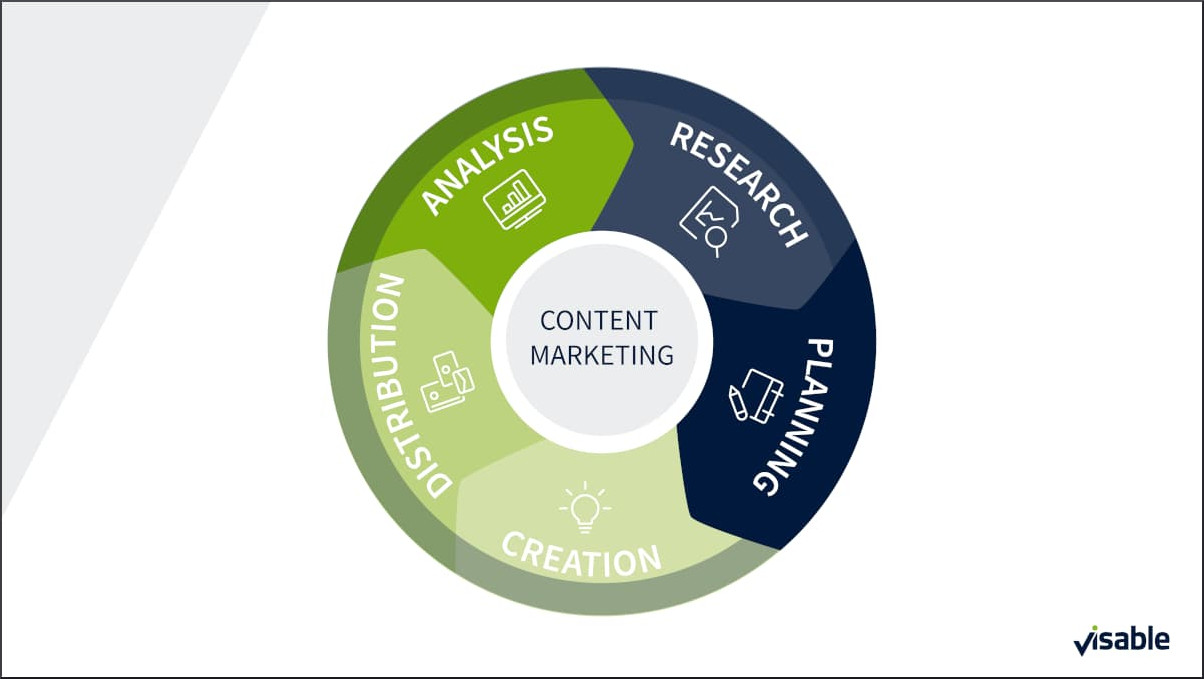Content marketing is a special form of online marketing, whereby enterprises produce content, such as text, videos and graphical illustrations, and broadcast this content to users on various channels. Content marketing serves to build up the brand and its image, to increase customer loyalty and, lastly, to naturally boost direct business. Small and medium-sized enterprises have a range of content marketing options to choose from to present their portfolio to a large circle of potential customers.
Content marketing for SMEs
Content marketing for SMEs takes advantage of the fact that potential customers inform themselves on the Internet with the help of editorial content regarding products and business topics – and, for instance, research this on Google. When an enterprise hones its website to meet these needs and offers a range of informative content, it can gain an increase in brand awareness. At the same time, it faces the competition, as the text and content have to stand up to other offers of information. The bar is high in many areas.
Content marketing for SMEs is particularly useful when an enterprise is offering complex products or services or would like to increase customer loyalty for the long run. Background information and transparency build trust. The measures should therefore follow a clear strategy – from the definition of the target group to address to the selection of concrete execution formats to the measurement of success.

First steps: strategy, content, formats
The content marketing strategy is based on several fundamental questions: Which values should be communicated? Who is the target group? With which formats and on which channels can the target group be reached best? Especially important is to plan the strategy from the viewpoint of the recipients. What is the potential customer looking for and what do they desire? How can an enterprise highlight itself and the special characteristics of its products and services?
Concrete measures include keyword analysis, which indicates concrete search terms (keywords and keyword combinations) in their frequency and when they are used. The keywords relevant for an enterprise determine the topics of the content to be produced.
When defining the objectives of content marketing measures, thoughts of the enterprise regarding the desired public opinion and the values to be conveyed should be taken into account. Topics based on the keywords illustrate users’ search needs. To supplement this, a view of the enterprise’s history, corporate culture, research and innovation activities, and employees can be taken.
After checking which information already exists, the content can be produced. Depending on the enterprise, the target group and the budget available, the different formats can be decided on:
- Magazine: Text on the website is available in different categories.
- How-to: Text and video formats provide instructions on how to solve problems and how to use the products.
- Listicle: Prepared as a list, short bits of information are easy to understand and therefore very popular.
- Whitepaper: Topics of focus are offered in a comprehensive paper which is available for downloading.
- E-book: Digital content is compiled as an e-book that can be downloaded.
- Video: The realisation of the content as a moving image is especially attractive; however, it is complex to produce and can be costly.
Content distribution: pull and push
The distribution of content should go beyond simply publishing it on the enterprise’s website – it should leverage more offensive forms. An efficient strategy combines pull media (e.g. company website, YouTube channel, corporate blog) with push formats (e.g. newsletter) which are sent to the user on registration. If users are convinced that the information offers high-quality content, they will most likely seek it out in future too. Professional content marketing for SMEs offers users the latest information on a regular basis, thus making it an efficient tool for supporting customer loyalty.
In addition to the traditional placement of content on the website, there are other ways to reach the target group:
- Blog: This stand-alone format – either completely or as part of the website – is a good distribution channel for expert explanations and comments mostly from regular authors, but also from well-known guest authors.
- Social media: Content here is usually presented in a shorter, more visual format that can be quickly consumed (snackable content). However, a link to the entire article on the enterprise’s own website should always be provided.
- YouTube: If videos are frequently produced, they can be presented on an own YouTube channel and on the website, or linked to from the newsletter.
- Newsletter: Here is where shorter versions of new text can be included as a teaser, or abstracts can be placed, to motivate the reader to visit the website.
For all forms of content marketing, one thing remains true: new content must be frequently published to ensure users’ interest and, at the same time, to maintain a good Google ranking. The media produced – text, graphics, video – must satisfy high standards. Efficient content marketing for SMEs is a task for specialists and, particularly in small and medium-sized enterprises, usually requires more attention and expertise than the in-house PR department can provide. Should content marketing be worthwhile for an enterprise, the use of a content marketing manager should be considered or a service provider should be commissioned to generate and maintain content.
